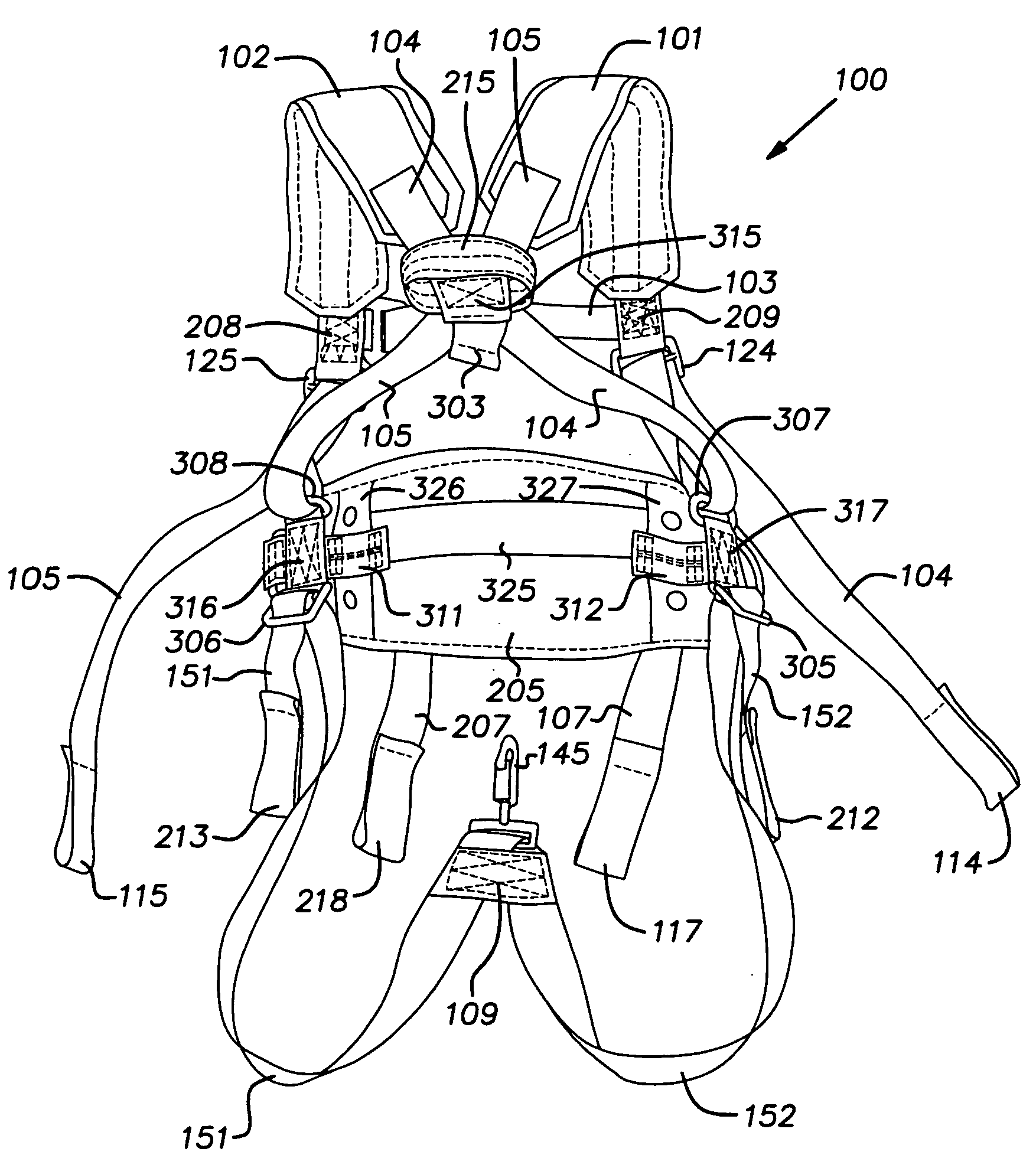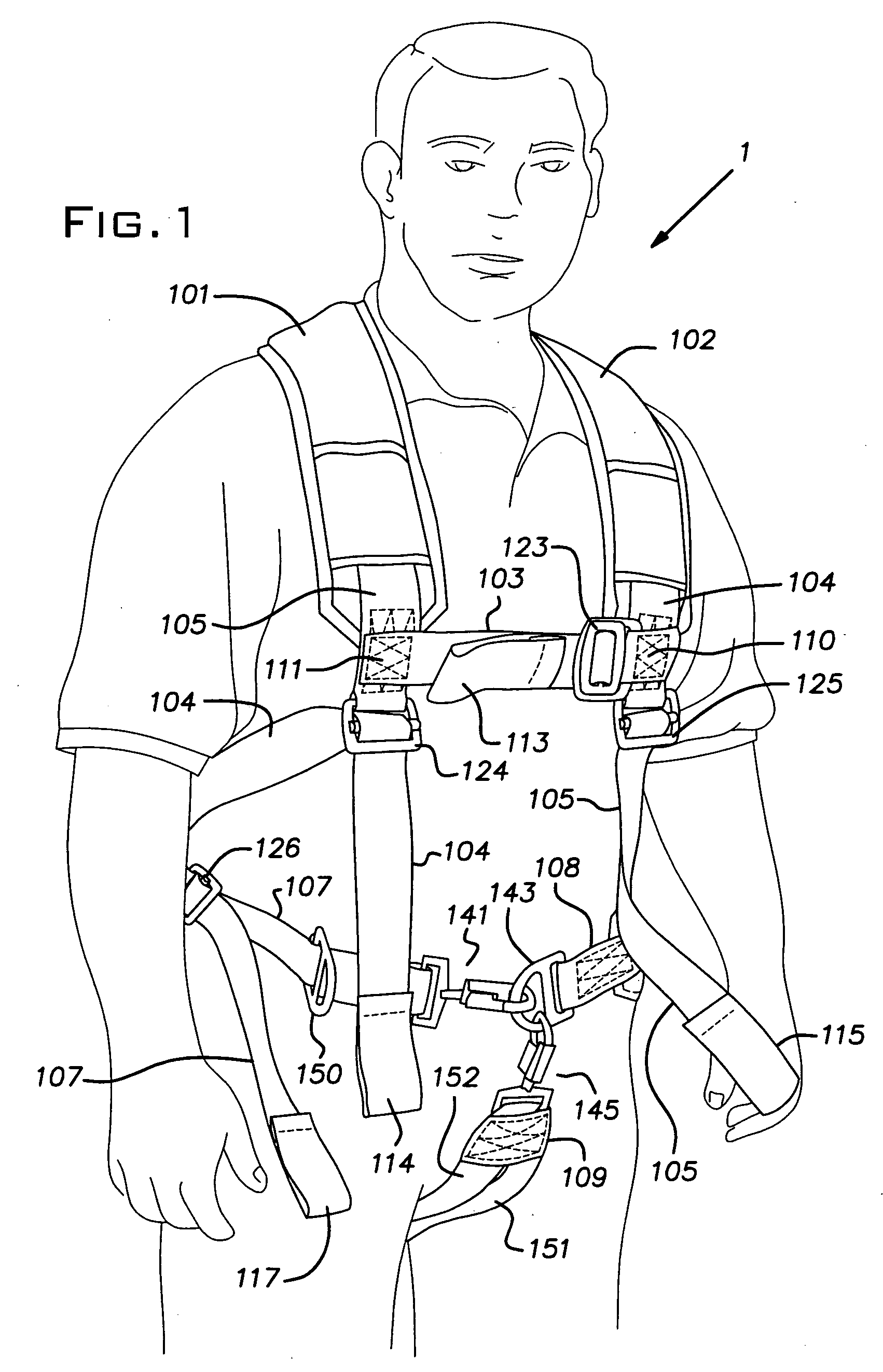Full body harness
a full body harness and body technology, applied in the field of body harnesses, can solve the problems of adding any additional equipment to what is already in use, heavy and bulky equipment, and equipment typically does not includ
- Summary
- Abstract
- Description
- Claims
- Application Information
AI Technical Summary
Benefits of technology
Problems solved by technology
Method used
Image
Examples
Embodiment Construction
[0057]Provided is an adaptable full-body harness with integral support line, as described hereinbelow, which can be worn as a class I, class II, and / or class III harness, depending on the straps that are buckled. The harness assembly can be removably fastened to the interior of an outer garment, such as a firefighter's turnout gear, or to a self-contained breathing apparatus (SCBA).
[0058]The harness assembly includes a harness body which is primarily a waist or chest belt meeting the requirements of a class I harness. The harness body may include a support line module, in which the support line is received and stored, is movable relative to the harness body, is accessible from an exterior of the outer garment, and is more easily deployed.
[0059]The harness further includes leg straps that, when utilized as specified herein, transform the harness into a class II harness. Further included are shoulder straps that may be attached to the harness body for modification to a class III harne...
PUM
 Login to View More
Login to View More Abstract
Description
Claims
Application Information
 Login to View More
Login to View More - R&D
- Intellectual Property
- Life Sciences
- Materials
- Tech Scout
- Unparalleled Data Quality
- Higher Quality Content
- 60% Fewer Hallucinations
Browse by: Latest US Patents, China's latest patents, Technical Efficacy Thesaurus, Application Domain, Technology Topic, Popular Technical Reports.
© 2025 PatSnap. All rights reserved.Legal|Privacy policy|Modern Slavery Act Transparency Statement|Sitemap|About US| Contact US: help@patsnap.com



